Yellow Crane Tower: A Captivating Blend of Nature and Ancient Architecture
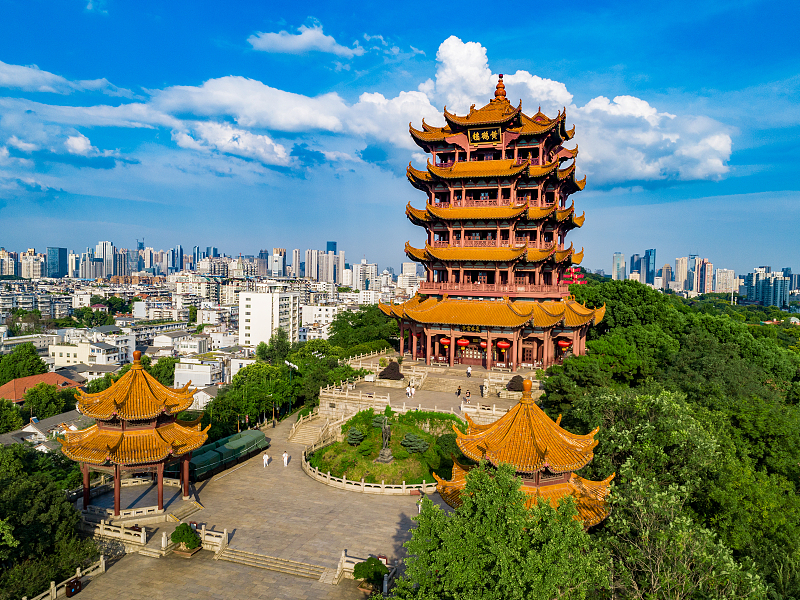
An Essential Guide to Visiting Yellow Crane Tower
In This Guide
- An Essential Guide to Visiting Yellow Crane Tower
- The Rich History and Legends of Yellow Crane Tower
- Main Highlights: What You Absolutely Can’t Miss
- Planning Your Visit: A Practical Guide
- Tickets: Prices, Booking, and Tips
- How to Get There: A Complete Transportation Guide
- Local Cuisine and Accommodation Nearby
- Frequently Asked Questions
- Final Thoughts on Your Trip
Visiting Yellow Crane Tower is like stepping into a living tapestry of Chinese history and culture, where poetry and legend intertwine against the stunning backdrop of the Yangtze River. This iconic landmark, perched atop Snake Hill in Wuhan, has stood the test of time since its original construction in 223 AD. While it has undergone numerous reconstructions, the spirit of the tower remains undiminished, captivating visitors with its rich stories and breathtaking views.
As you ascend the five magnificent tiers of this architectural marvel, you will be transported through the annals of Chinese literature and artistry. Each level unveils a new layer of history, from intricate murals depicting the legendary tale of the yellow crane to displays celebrating the poets who have drawn inspiration from this enchanting site. The tower is more than just a visual feast; it is a cultural pilgrimage for anyone seeking to understand the poetic heart of China.
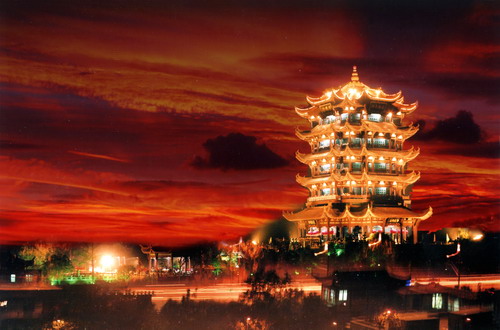
Yellow Crane Tower.
Whether you are an avid history buff, a lover of literature, or simply seeking stunning vistas of Wuhan’s skyline, Yellow Crane Tower offers an unforgettable experience. In this guide, we will explore the essential details to make your visit seamless and enriching, ensuring you leave with a deeper appreciation for one of China’s most revered symbols. Prepare to be inspired as you embark on a journey through time and tradition at Yellow Crane Tower.
The Rich History and Legends of Yellow Crane Tower
Nestled on the scenic Snake Hill, overlooking the mighty Yangtze River, the Yellow Crane Tower (黄鹤楼) stands as a testament to Wuhan’s rich cultural heritage and its storied past. This iconic structure has not only captured the imagination of countless poets and artists through the centuries but also serves as a living reminder of the resilience of Chinese history.
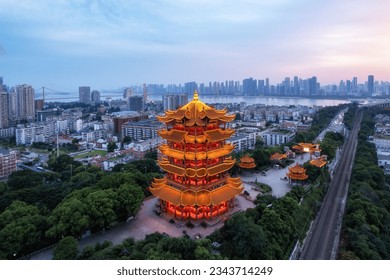
Yellow Crane Tower.
A Historical Chronicle
The origins of Yellow Crane Tower can be traced back to 223 AD, during the tumultuous Three Kingdoms period. Initially erected as a military watchtower, it was strategically positioned to guard the vital waterways of the Yangtze River. Its significance grew over the centuries, transforming from a mere fortress into a revered cultural landmark that attracted scholars, poets, and travelers alike.
Despite its esteemed status, the tower has faced numerous adversities. It has been built and destroyed more than a dozen times, enduring fires and conflicts that marked the turbulent phases of Chinese history. The most celebrated incarnation was constructed during the Tang Dynasty (618–907 AD), earning acclaim as one of the finest towers in China. However, by the late Qing Dynasty, it met its end once more, leaving behind only the echoes of its grandeur.
The current structure, completed in 1985, is a meticulous reconstruction of the Qing Dynasty design. Standing at 51.4 meters (169 feet) with five tiers, it embodies the elegance of traditional Chinese architecture while offering modern visitors a glimpse into the past.
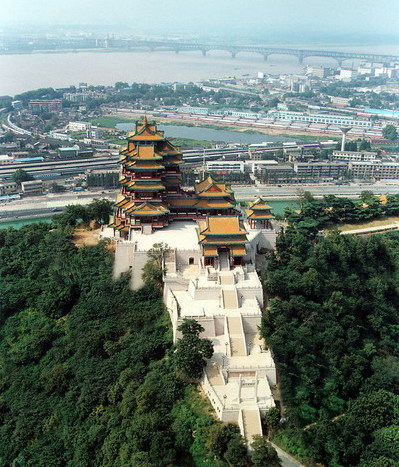
Yellow Crane Tower.
The Legend of the Yellow Crane
At the heart of the tower’s allure lies the enchanting legend of the yellow crane. According to local folklore, a kind-hearted man once helped a wounded yellow crane. In gratitude, the crane invited him to ride on its back and soared into the heavens, never to return. This poignant tale is beautifully depicted in a massive mural at the base of the tower, illustrating the crane’s ascent into the sky. As a nod to this myth, the tower humorously boasts that no cranes have been seen in the vicinity since—they have “flown away” to join their celestial companions.
A Muse for Poets
Over its long history, Yellow Crane Tower has inspired more than 300 classical poems, serving as a muse for many renowned poets. The most famous of these is the poem by Cui Hao from the Tang Dynasty, which begins:
“The yellow crane has long since gone away,
Only white clouds drift over the ruins day by day…”
This evocative verse speaks to the fleeting nature of beauty and the passage of time, themes that resonate deeply within Chinese literature. Visitors can explore these poetic tributes at the Poets’ Pavilion, where verses are elegantly carved into stone tablets, celebrating the artistic legacy of the tower.

Yellow Crane Tower.
A Cultural Beacon
Today, Yellow Crane Tower is not merely an architectural marvel; it is a vibrant cultural hub that connects visitors to Wuhan’s historical narrative. As you ascend the tower’s levels, you will encounter a plethora of intricate murals and exhibitions. Each floor reveals a unique aspect of the tower’s significance, from the stunning calligraphy collections to the panoramic views that showcase the confluence of history and modernity.
For those seeking a deeper connection to the stories behind this iconic landmark, local guides offer insights into the layered history, folklore, and personal anecdotes that breathe life into its walls. Whether you are a history enthusiast, a literature lover, or simply a curious traveler, Yellow Crane Tower invites you to step into a rich tapestry of Chinese culture and legacy.
Main Highlights: What You Absolutely Can’t Miss
Unmissable Experiences at Yellow Crane Tower
As you ascend the storied heights of Yellow Crane Tower, prepare to be transported through centuries of rich Chinese history and culture. This iconic structure, perched atop Snake Hill with sweeping views of the Yangtze River, is not just a monument but a living testament to the poetic spirit of Wuhan. Here are the highlights you absolutely cannot miss during your visit.
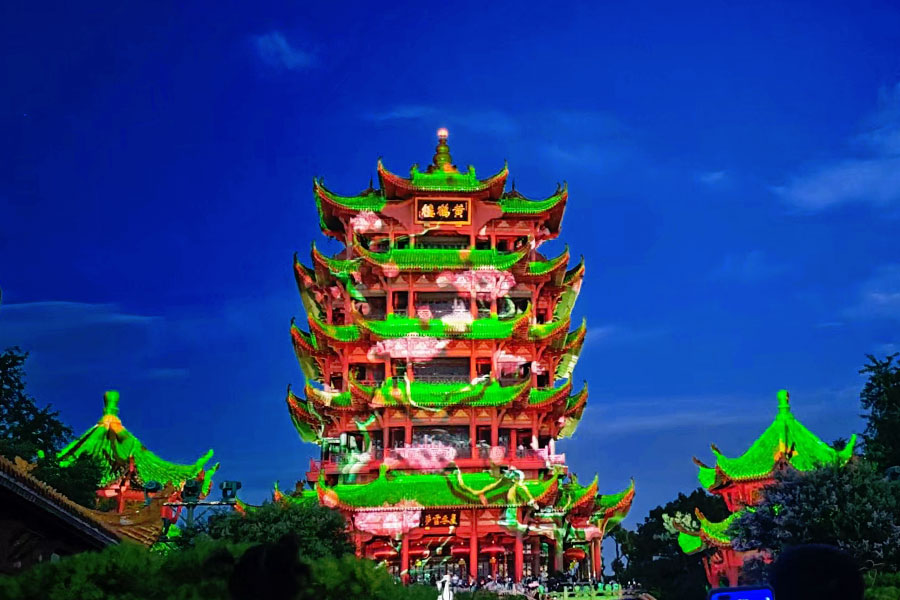
Yellow Crane Tower.
1. The Tower Itself: A Journey Through Time
Climbing the five tiers of Yellow Crane Tower is akin to walking through a gallery of history. Each level unveils a different narrative and breathtaking artwork.
-
1st Floor: Start your journey with a stunning mosaic depicting the legendary tale of “Yellow Crane Flying Away.” This folk story echoes the tower’s name and significance in Chinese culture.
-
2nd Floor: Marvel at murals honoring Tang Dynasty poets, particularly Cui Hao, whose famous poem immortalizes the tower. His words resonate within these walls, inviting you into the world of ancient Chinese literature.
-
3rd & 4th Floors: Explore calligraphy collections and historical paintings that reflect the artistic accomplishments of various dynasties. Each piece tells a story of its own, enriching your understanding of Chinese heritage.
-
5th Floor: Ascend to the panoramic viewing platform, where you can soak in the best vistas of Wuhan. On clear days, the Yangtze River, the Yangtze Bridge, and the modern skyline create a breathtaking backdrop, especially at sunset.
2. The Legend of the Yellow Crane Mural
At the tower’s base lies a massive mural that narrates the myth of the yellow crane, a tale that has captivated hearts for generations. This story of kindness and ascension into the heavens adds an enchanting layer to your visit. Interestingly, the tower today is devoid of cranes, a whimsical nod to the legend that claims they have “flown away.”
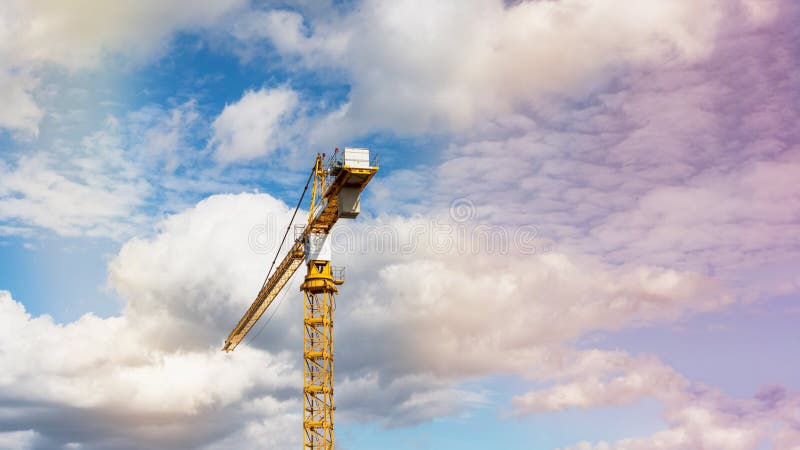
Yellow Crane Tower.
3. The Poets’ Pavilion: A Tribute to Literary Giants
For literature enthusiasts, the Poets’ Pavilion is an unmissable gem. This tranquil corner features over 300 classical poems carved into stone tablets, paying homage to the poets inspired by the tower. Don’t miss the opportunity to reflect on Cui Hao’s poignant words:
“The yellow crane has long since gone away, Only white clouds drift over the ruins day by day…”
Consider bringing a notebook to jot down your own poetic inspirations as you absorb the serene ambiance.
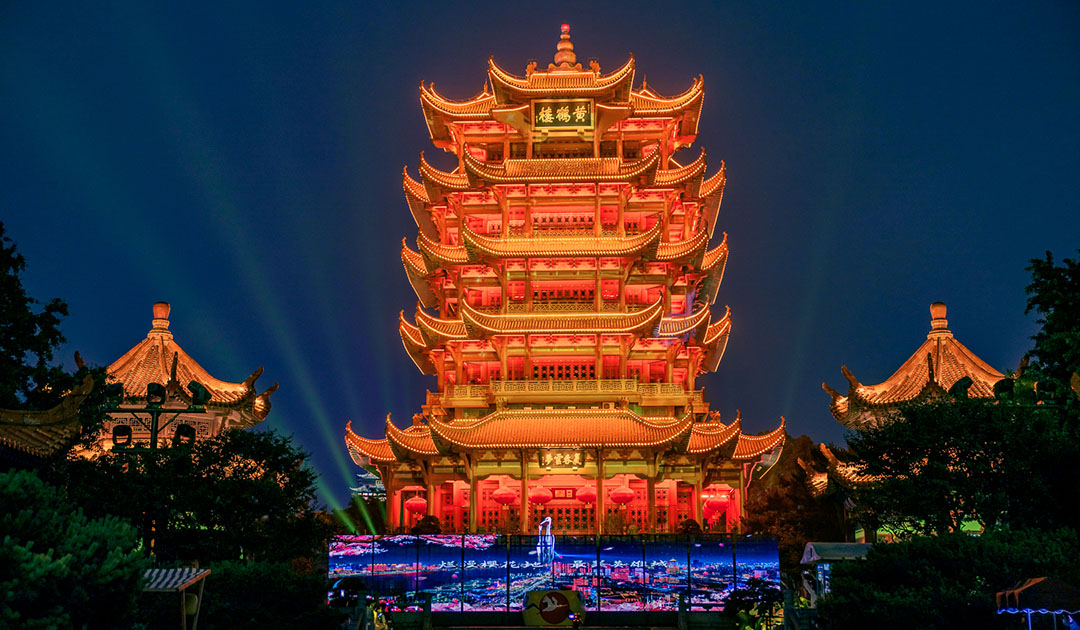
Yellow Crane Tower.
4. Sunset Views: The Golden Hour Experience
Timing your visit is crucial for the most memorable experience. Arrive in the late afternoon to witness the tower bathed in golden hues as the sun sets over the Yangtze River. This magical hour not only enhances the beauty of the surroundings but also creates a nostalgic atmosphere, perfect for capturing photographs or simply savoring the moment.
5. Cultural Insights: More Than Just a Visit
While exploring Yellow Crane Tower, take the opportunity to engage with local guides who can share personal anecdotes and cultural insights that breathe life into the historical narratives. Their stories often include childhood memories tied to the tower, adding a personal touch to your visit.
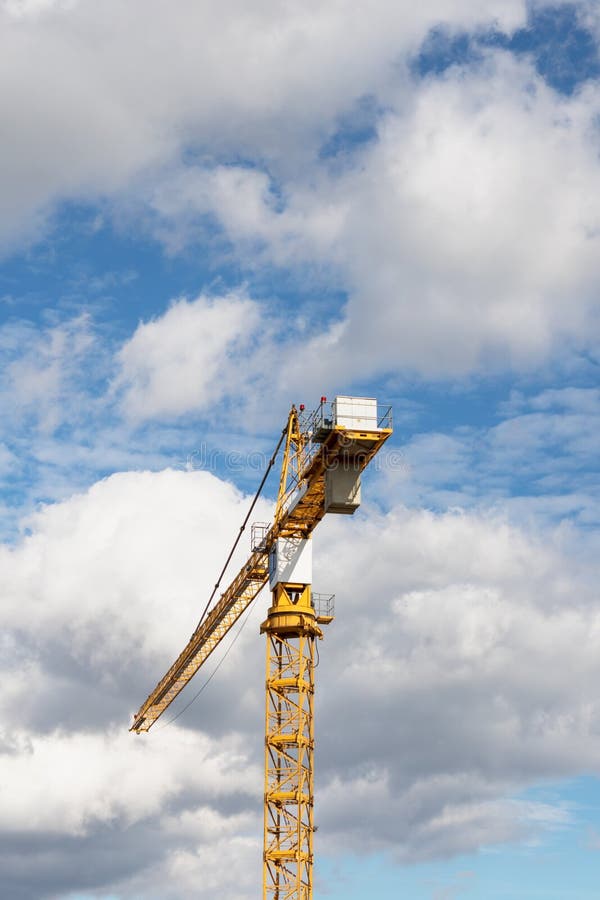
Yellow Crane Tower.
6. Nearby Culinary Delights
After soaking in the beauty and history of Yellow Crane Tower, treat your taste buds to Wuhan’s famous street food nearby. Head to Jiangtan River Street Snacks to try local specialties like grilled river fish, spicy duck neck, and Wuhan-style hot dry noodles. This culinary experience complements your cultural journey, allowing you to fully immerse yourself in the local lifestyle.
Final Thoughts
Yellow Crane Tower is not merely a historical site; it is a celebration of Chinese culture, poetry, and resilience. Each highlight offers a unique entry point into the soul of Wuhan, making your visit a profound encounter with history. Whether you’re an avid historian, a poetry lover, or simply a curious traveler, this landmark promises an unforgettable experience that resonates long after your visit.
Planning Your Visit: A Practical Guide
Essential Information for Your Visit to Yellow Crane Tower
As you prepare for your journey to Wuhan’s most iconic landmark, Yellow Crane Tower, this guide will equip you with everything you need to know for an enriching experience steeped in history and culture.
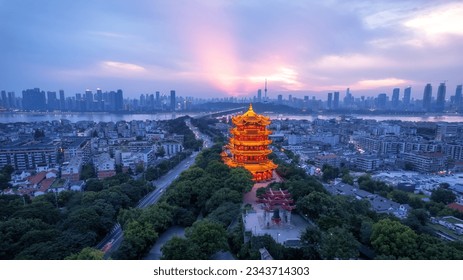
Yellow Crane Tower.
Historical Significance
Yellow Crane Tower is not merely a structure; it is a symbol of resilience and cultural heritage. Originally built in 223 AD during the Three Kingdoms period, the tower has witnessed numerous restorations, wars, and legends that make it a vital piece of Chinese history. Today’s tower, reconstructed in 1985, stands 51.4 meters tall, echoing the grandeur of its Qing Dynasty predecessor.
Visiting Hours and Admission Fees
- Opening Hours: Daily from 8:00 AM to 6:00 PM.
- Entrance Fee:
- ¥70 per adult
- Discounts available for students and seniors.
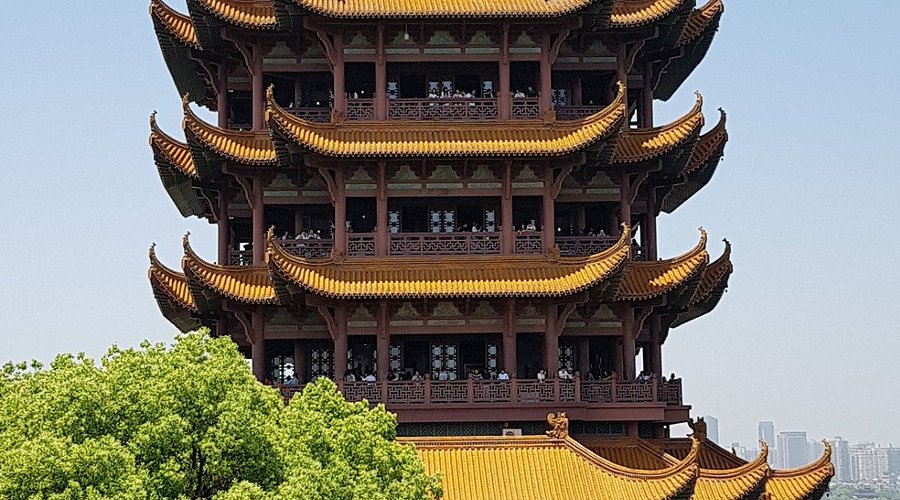
Yellow Crane Tower.
Tickets can be purchased online or at the entrance, but consider buying in advance to avoid long queues.
Best Times to Visit
To fully appreciate Yellow Crane Tower while avoiding crowds, plan your visit during these times:
- Early Morning: 8:00 – 10:00 AM
- Late Afternoon: 4:00 – 6:00 PM
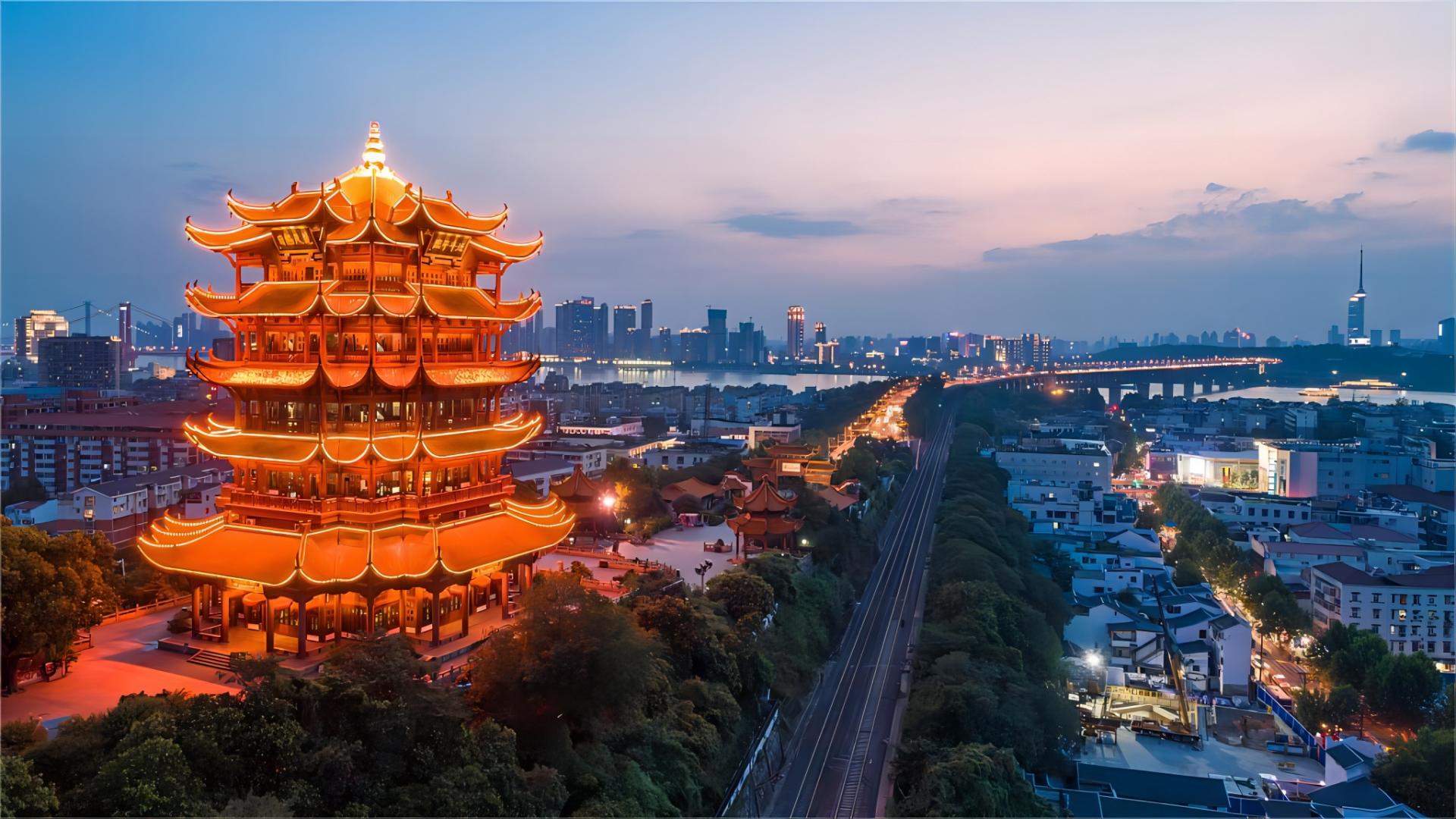
Yellow Crane Tower.
Visiting at sunset will reward you with breathtaking views as the sun casts a golden glow over the Yangtze River.
Getting There
- By Metro: Take Line 5 to Huanghelou Station (黄鹤楼站). The entrance is just a 5-minute walk from the station.
- By Taxi: Expect a quick 15-minute ride from Wuhan’s city center.
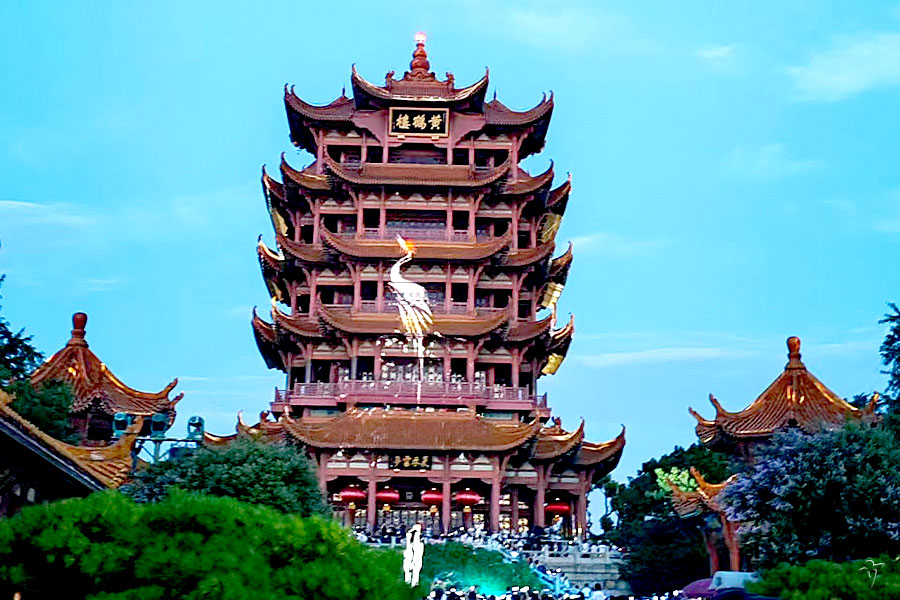
Yellow Crane Tower.
Highlights Within the Tower
- The Tower Itself: Each floor showcases murals and cultural exhibits.
- 1st Floor: A mosaic of the “Yellow Crane Flying Away” legend.
- 2nd Floor: Murals featuring Tang Dynasty poets, including the famed Cui Hao.
- 3rd & 4th Floors: Collections of calligraphy and historical paintings.
-
5th Floor: The pinnacle for panoramic views of Wuhan, the Yangtze River, and the modern skyline.
-
The Yellow Crane Legend Mural: Located at the base, this mural narrates the mythical tale behind the tower’s name, capturing the imagination of visitors.
-
The Poets’ Pavilion: A tribute to the many poets inspired by the tower, featuring stone tablets inscribed with over 300 classical poems.
Local Cuisine to Try Nearby
After exploring, indulge in Wuhan’s street food, particularly at Jiangtan River Street Snacks. Don’t miss:
– Grilled river fish
– Spicy duck neck
– Wuhan-style hot dry noodles
Exploring with a Local Touch
For a deeper connection to the history and culture, consider booking a guided tour with Locallenz. Local guides bring a personal touch, sharing stories and legends that breathe life into the tower’s walls.
Final Tips
- Bring a notebook: If you’re a literature lover, find a quiet spot at the Poets’ Pavilion to write your own poem inspired by the enchanting views.
- Photography: Capture stunning shots from the fifth floor, especially during golden hour.
Yellow Crane Tower is more than just a must-see attraction; it’s a gateway into the rich tapestry of Chinese culture and history. Enjoy your visit!
Tickets: Prices, Booking, and Tips
Visiting Yellow Crane Tower: Ticket Information and Tips
When planning your visit to the iconic Yellow Crane Tower in Wuhan, it’s essential to know the ticketing details to ensure a smooth and enjoyable experience. Here’s everything you need to know about ticket prices, booking options, and some handy tips for your visit.
Ticket Prices
- Standard Admission: ¥70 per adult
- Discounted Rates: Reduced prices are available for students and seniors, so be sure to bring valid ID for verification.
Booking Information
-
Purchase Options: Tickets can be conveniently purchased either online in advance or directly at the entrance of the tower. If you prefer to avoid long lines, consider booking your tickets online ahead of your visit.
-
Operating Hours: Yellow Crane Tower is open daily from 8:00 AM to 6:00 PM. Arriving early can help you beat the crowds and enjoy a quieter experience.
Getting There
-
By Metro: The easiest way to reach Yellow Crane Tower is via the Wuhan Metro. Take Line 5 to Huanghelou Station (黄鹤楼站), which is just a short 5-minute walk from the entrance.
-
By Taxi: If you prefer a more direct route, a taxi from Wuhan’s city center will take approximately 15 minutes, depending on traffic.
Tips for Your Visit
-
Best Times to Visit: For a more relaxing experience, consider visiting in the early morning (8:00 – 10:00 AM) when the crowds are fewer, or in the late afternoon (4:00 – 6:00 PM) for stunning sunset views over the Yangtze River.
-
Explore the Levels: Each level of the tower features unique murals and cultural exhibits. Don’t miss the breathtaking panoramic view from the 5th floor, where you can see the Yangtze River and Wuhan’s modern skyline.
-
Plan for Food: After exploring, indulge in Wuhan’s famous street food nearby. Jiangtan River Street Snacks offers a variety of local delicacies, including grilled river fish and Wuhan-style hot dry noodles.
-
Literary Inspiration: If you’re a literature enthusiast, bring a notebook and find a quiet spot to write. The serene surroundings and historical ambiance make for perfect inspiration.
-
Local Insights: For a deeper understanding of the tower’s history and cultural significance, consider joining a guided tour with a local expert. They can share personal stories and hidden gems that enrich your experience.
By keeping these details in mind, your visit to Yellow Crane Tower will be not only memorable but also deeply enriching, connecting you to the storied past and vibrant culture of Wuhan.
How to Get There: A Complete Transportation Guide
Navigating Your Way to Yellow Crane Tower
Visiting the iconic Yellow Crane Tower in Wuhan is a journey steeped in history, culture, and breathtaking views. To ensure that your experience begins smoothly, here’s a comprehensive guide on how to reach this legendary landmark.
By Metro
The most convenient way to get to Yellow Crane Tower is via the Wuhan Metro:
- Take Line 5 to Huanghelou Station (黄鹤楼站).
- Once you exit the station, it’s just a 5-minute walk to the entrance of the tower.
This method is particularly advantageous as it avoids the city’s traffic and provides a direct route to one of Wuhan’s most cherished sites.
By Taxi
If you prefer a more direct approach, taxis are widely available throughout the city:
- Expect a 15-minute ride from Wuhan’s city center to Yellow Crane Tower.
- Taxi fares are relatively affordable, making this a comfortable option, especially if you are traveling in a group or with heavy bags.
By Bus
For those looking to immerse themselves in local life, taking a bus is a great option:
- Multiple bus lines service the area around Yellow Crane Tower. Look for buses heading to Huanghelou or Wuchang District.
- Be sure to check local schedules and routes, as they can change frequently.
Tips for a Smooth Journey
- Plan Ahead: If you are visiting during peak tourist seasons or weekends, consider leaving early in the morning or later in the afternoon to avoid crowds.
- Language Assistance: Although many signs are in English, having a translation app or a map can be helpful, as not all taxi drivers may speak English.
- Local Currency: Have some cash ready for bus or taxi payments, as not all services accept credit cards.
Exploring Wuhan Beyond the Tower
Once you’ve experienced the historical grandeur of Yellow Crane Tower, consider exploring nearby attractions and dining options.
- Nearby Attractions:
- Wuhan Yangtze River Bridge: Just a short walk away, this bridge offers a glimpse into the city’s engineering marvels.
-
Hubu Alley: Known for its bustling food stalls, you can savor local street delicacies such as Wuhan-style hot dry noodles.
-
Dining Options:
- After your visit, indulge in local favorites at nearby eateries. The Jiangtan River Street Snacks is a must-visit for grilled river fish and spicy duck neck.
By planning your transportation wisely, you can enjoy a seamless journey to Yellow Crane Tower and immerse yourself in the rich tapestry of Wuhan’s culture and history.
Local Cuisine and Accommodation Nearby
Savoring Wuhan: Culinary Delights and Comfortable Stays Near Yellow Crane Tower
Exploring the majestic Yellow Crane Tower is not just a feast for the eyes but also an opportunity to indulge in the rich local flavors of Wuhan. As you delve into this historic landmark, make sure to treat your taste buds to some of the city’s most beloved dishes and find a cozy place to rest nearby.
Local Cuisine: Must-Try Dishes
Wuhan is renowned for its vibrant food scene, particularly its street food. Here are some culinary highlights you should not miss:
-
Hot Dry Noodles (热干面 – Rè Gān Miàn): A local specialty, these noodles are served cold and tossed in sesame paste, soy sauce, and topped with pickled vegetables and crushed peanuts. The bold flavors and unique texture make it a must-try.
-
Grilled River Fish (烤鱼 – Kǎo Yú): Enjoy the fresh catch from the Yangtze River, often marinated in spices and grilled to perfection. You’ll find various stalls along Jiangtan River Street, where you can savor this delicacy.
-
Spicy Duck Neck (鸭脖 – Yā Bó): A popular street snack, this dish is marinated in a spicy mix and has a rich, savory flavor. It’s often enjoyed with a cold drink after a day of sightseeing.
-
Wuhan-style Doupi (豆皮): This is a savory snack made of rice and mung bean flour, filled with various ingredients, and then steamed. It’s a perfect grab-and-go option if you’re on the move.
-
Pork Ribs Soup (排骨汤 – Pái Gǔ Tāng): A hearty and aromatic soup, this dish features tender pork ribs cooked with various herbs and spices, perfect for a revitalizing meal after your explorations.
Dining Hotspots Near Yellow Crane Tower
When hunger strikes, you won’t have to wander far. Here are some popular eateries close to the tower:
-
Hubu Alley (户部巷): This bustling food street is just a short walk from Yellow Crane Tower. Here, you can sample a variety of local snacks, including hot dry noodles and grilled fish, all in a lively atmosphere.
-
Cai Lin Ji Re Gan MianGuan (蔡林记热干面馆): Renowned for its hot dry noodles, this restaurant offers an authentic taste of Wuhan’s culinary heritage and is located a mere 0.3 miles from the tower.
-
The Stone’s Hot Dry Noodles (石头热干面): Another fantastic spot for hot dry noodles, it has garnered rave reviews for its flavorful dishes and casual dining atmosphere, just a short distance from your cultural adventure.
Comfortable Accommodation Options
After a day filled with exploration, finding comfortable lodging is paramount. Here are some recommended places to stay that allow easy access to Yellow Crane Tower:
-
Wanda Realm Wuhan: Just a 20-minute drive from the tower, this upscale hotel offers modern amenities, stunning views of the Yangtze River, and an on-site restaurant serving both local and international cuisine.
-
Hilton Wuhan Riverside: Enjoy the luxury of this hotel located along the riverside, offering elegant rooms, a fitness center, and proximity to major attractions, including Yellow Crane Tower.
-
Hanting Hotel Wuhan Huanghelou: If you’re looking for budget-friendly options, this hotel provides clean and comfortable rooms and is only a short walk from the tower, making it a great base for exploring the area.
-
Ibis Wuhan Optics Valley: This hotel offers a blend of comfort and affordability, with contemporary rooms and convenient access to public transportation, making it easy to reach local dining spots and attractions.
Conclusion
Your journey to Yellow Crane Tower is not just about witnessing history; it is also about savoring the flavors that define Wuhan. With its delicious local dishes and comfortable accommodations nearby, you can immerse yourself fully in the culture and heritage of this enchanting city. So pack your appetite and your sense of adventure, and get ready for an unforgettable experience!
Frequently Asked Questions
Frequently Asked Questions about Yellow Crane Tower
1. What is the history of Yellow Crane Tower?
Yellow Crane Tower, an iconic landmark in Wuhan, has a rich history dating back to 223 AD during the Three Kingdoms period. Initially built as a military watchtower, it has undergone numerous reconstructions due to wars and fires. The most renowned version was constructed during the Tang Dynasty (618–907 AD). The current structure, completed in 1985, is a faithful reconstruction reflecting the Qing Dynasty’s architectural style.
2. How much does it cost to visit Yellow Crane Tower?
The standard entrance fee is ¥70 per adult. Discounts are available for students and seniors. Tickets can be purchased online in advance or at the entrance.
3. What are the best times to visit to avoid crowds?
To enjoy a more serene experience, visit during early morning (8:00 – 10:00 AM) or late afternoon (4:00 – 6:00 PM). These times not only offer fewer crowds but also the opportunity to witness breathtaking sunset views over the Yangtze River.
4. How can I get to Yellow Crane Tower?
The easiest way to reach Yellow Crane Tower is by taking Metro Line 5 to Huanghelou Station (黄鹤楼站), which is just a 5-minute walk from the entrance. Alternatively, you can take a taxi for a quick 15-minute ride from Wuhan’s city center.
5. Are there any noteworthy features or exhibits inside the tower?
Yes! Each level of the tower features unique exhibits. Highlights include:
– 1st Floor: A giant mosaic depicting the legend of “Yellow Crane Flying Away.”
– 2nd Floor: Murals of famous Tang Dynasty poets, including Cui Hao.
– 3rd & 4th Floors: Stunning calligraphy collections and historical paintings.
– 5th Floor: The best panoramic views of Wuhan, showcasing the Yangtze River and the modern skyline.
6. Is there food available near Yellow Crane Tower?
Absolutely! After your visit, explore Jiangtan River Street Snacks, where you can indulge in local delicacies like grilled river fish, spicy duck neck, and Wuhan-style hot dry noodles.
7. What should I know about the legend associated with Yellow Crane Tower?
The tower is named after an ancient legend about a kind man who was rewarded for his good deeds by riding a crane into the heavens. A mural at the base of the tower narrates this tale, symbolizing why there are no cranes present today—they have all “flown away.”
8. Are there any guided tours available?
Yes! Various guided tours are available that provide deeper insights into the history and cultural significance of Yellow Crane Tower. Opting for a local guide can enhance your experience, offering personal anecdotes and hidden stories related to this legendary site.
Final Thoughts on Your Trip
As you conclude your journey at the majestic Yellow Crane Tower, take a moment to reflect on the tapestry of history and culture that envelops this iconic landmark. Rising gracefully above the banks of the Yangtze River, the tower not only offers breathtaking views but also serves as a poignant reminder of China’s rich literary and artistic heritage.
Key Takeaways from Your Visit:
-
A Journey Through Time: From its origins as a military watchtower during the Three Kingdoms period to its status as a muse for countless poets, Yellow Crane Tower embodies resilience and creativity. Each floor invites you to step back in time, unveiling stories of love, loss, and legend that have inspired generations.
-
Panoramic Perspectives: Make sure to cherish the panoramic views from the top floor, where the sprawling cityscape of Wuhan meets the flowing currents of the Yangtze. Witnessing the sunset from this vantage point is a memory that will linger long after your visit.
-
Cultural Connections: Engage with the murals and poetic tributes that adorn the walls. They are not just decorative; they are the heartbeat of the tower, echoing the sentiments of those who have come before you. Consider jotting down your own thoughts or inspirations as you soak in the beauty around you.
-
Local Flavors: Before you leave, indulge in Wuhan’s vibrant street food scene nearby. The flavors of grilled river fish and spicy duck neck will offer a delicious farewell to your visit, tying your experience to the local culture.
As you depart, remember that Yellow Crane Tower is not merely a monument; it’s a bridge between the past and the present, inviting you to carry its stories and beauty into your own life. Whether you are a lover of history, poetry, or simply breathtaking views, your time here has provided a unique glimpse into the soul of Wuhan—a place where every corner holds a tale, and every view inspires wonder. Safe travels, and may your adventures continue to unfold with the same enchantment found within the walls of this illustrious tower.